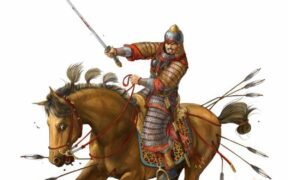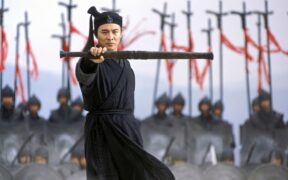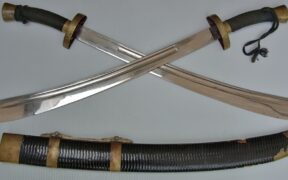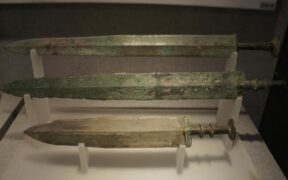Our content features commercial links to our products, committed to transparent, unbiased, and informed editorial recommendations. Learn More
Tang Dao: The Chinese Golden Age Sword
NO AI USED This Article has been written and edited by our team with no help of the AI
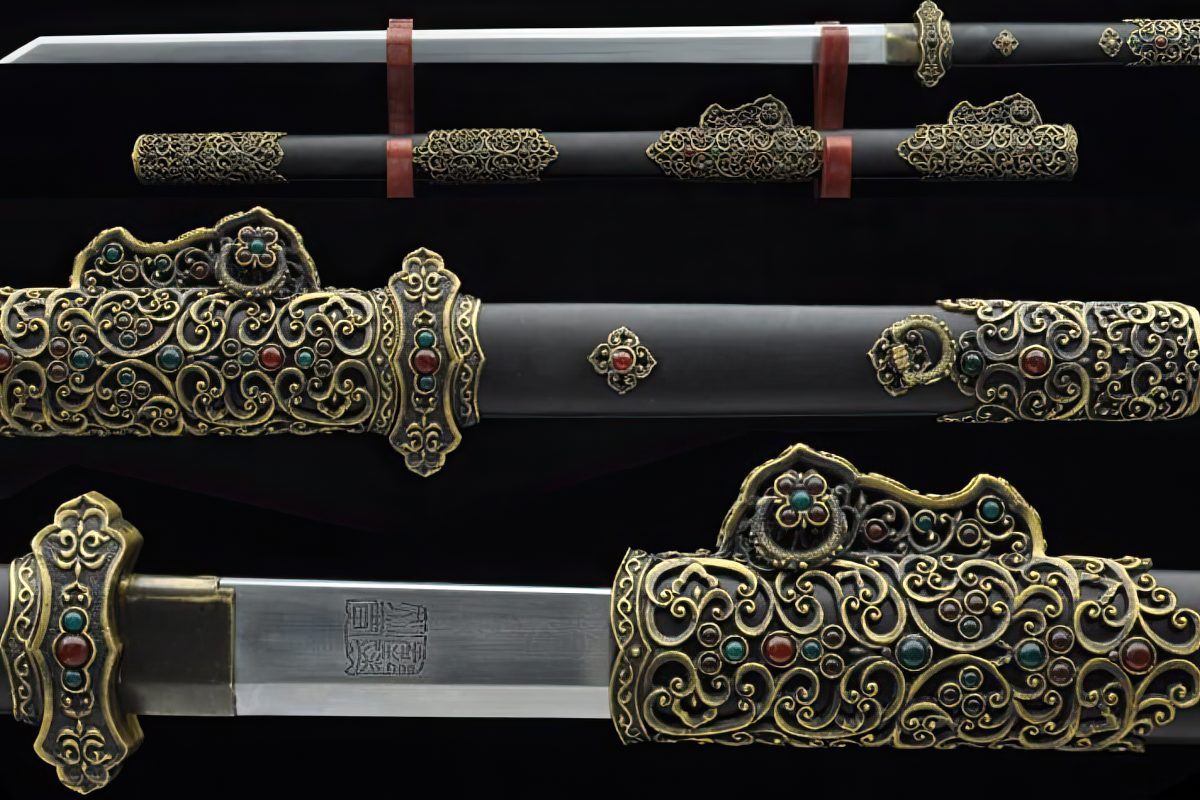
The Tang Dao, or Tang Heng Dao Sword as it is more generally known, is a straight sword with a single edge forged during the Tang Dynasty of China’s Golden Age (618-907 AD). This Chinese sword was issued to every soldier in the Tang Dynasty’s army, and its brilliant craft and design are said to have influenced the creation of the popular Japanese Katana.
The Chinese Tang Dao is a beautiful sword that falls between a straight Jian and a curved Dao saber, and while it is not as well-known as the Katana, it was once one of the most sought-after weapons in China.
This article will explore its background while examining its features and discussing its optimal applications.
Characteristics of the Tang Dao
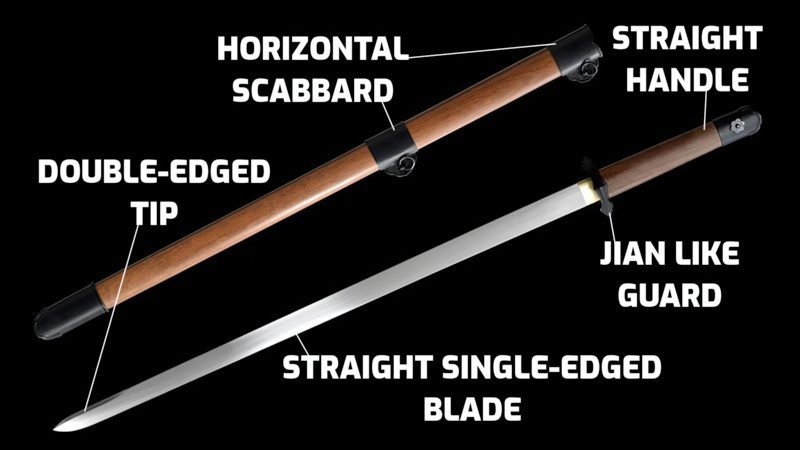
The Tang Dao is a Chinese Saber (Dao meaning curved saber in English) that is straight or slightly curved because of its full tang blade suspension system. It has a single-edged blade, meaning sharpened just on one side, while it has a double-edged blade’s tip making it powerful for thrusting strikes. It is sometimes referred to as the Tang Heng Dao, heng meaning horizontal, or the “horizontal Dao” because of its shape.
Blade
The blade of the Tang Dao sword is straight and single-edged, and it has a stiff and straight backbone while the sharpened edge very slightly tapers into a double-edged tip, almost giving it a false edge type of look. This gives it a very good thrusting point but, simultaneously, makes it a very powerful instrument for slashing attacks, which the Japanese Hamon excels at.
Usually, the Tang Dao can be seen with a brass or copper alloy hibaki or an unsharpened part of the blade just next to the guard. It is placed there to serve as the seat of the scabbard, but it isn’t confirmed whether it would be on the original Tang Dao Sword because it became widespread at the end of the 10th century.
The Tang Dao Sword is made of many metals today, for example, pattern steel. The blade can be made from high-carbon steel or spring steel when slashing and thrusting. Stainless steel was used for decorative purposes, and manganese steel for flexibility of the sword or possibly to be used in sword dances. Some Tang Dao Swords are also made with the popular Damascus steel.
The overall blade length for the Tang Dao Sword is around the 27 inches (70 cm) mark, making it a sturdy and flexible blade for fast and efficient strikes. The blade width is around 1.2 inches (3.2 cm).
Guard
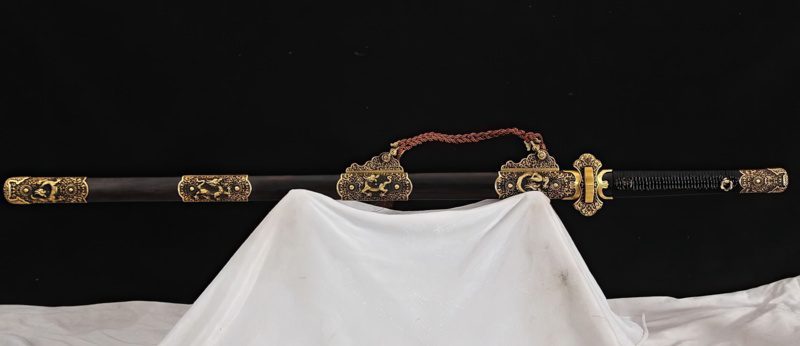
Unlike many Dao swords, the guard of the Tang Dao is neither a disc guard nor the tiny guard typical of Han Dynasty blades. The guard, Dao Ge, in Chinese, is similar to that of a Jian Sword because, during the Tang Dynasty, the Jian guards were grafted onto Dao sabers during the manufacturing process.
Some experts argue that the spread of the Dang Dynasty into Central Asia brought with it a western influence, which may be observed in the designs of guards that existed before the Chinese expansion.
Handle
This Chinese Sword is notable for its simple and straight handle, which begs the question of whether it is intended to be wielded with one or two hands. Typically, the pommel is a small, solid piece of metal or wood fastened to the end of the handle. Since the sword can be highly ceremonial, the handle can be adorned with various decorative items, but the blossom Tang stands out as the most common.
The most common handle length for the Dao Sword is 7 to 9 inches (18 to 22 cm) which is fairly long and could provide short to medium-range strikes.
Pommel
Unlike many Chinese swords that came before it, the Tang Dao sword does not necessarily have a ring pommel. Some people would go so far as to suggest that it doesn’t have a pommel at all when compared to other Chinese swords. The style of smaller pommels was manufactured with the Tang Dao sword.
Scabbard
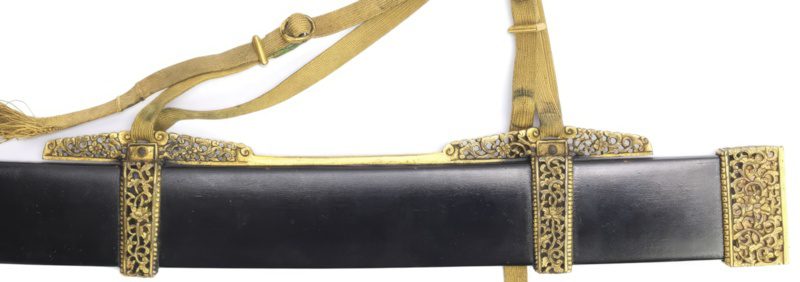
A scabbard with a P-shaped system is used for the Tang Dao Sword. This scabbard is a suspension mechanism for the sword’s sheath and has fittings or rings attached to it. One of these rings is positioned on top of the guard, and the other is in the middle of the blade. Each ring would have a leather strap connecting to the wielder’s belt.
Due to the scabbard’s central balancing mechanism, the sword can remain perfectly horizontal even after a large range of motion. Some have theorized that the scabbard may have inspired the name Tang “Heng” Dao. Western influence from the Sassanid Empire in Persia brought this relatively new method to China and would overtake the previous scabbard method used in the Han Dynasty. It is usually made of wood but can be covered with other things such as ray skin or leather.
Weight
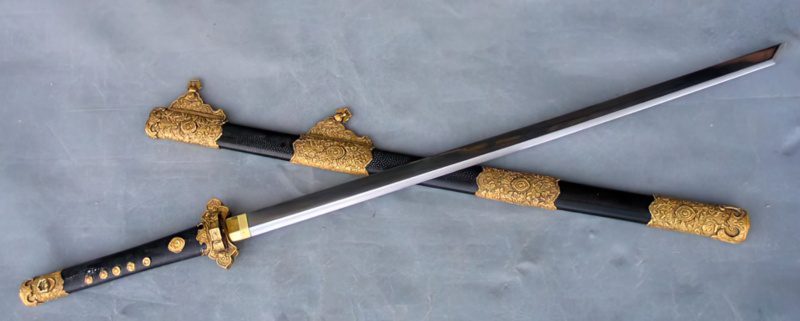
This sword is primarily used as a one-handed weapon but has a large handle for piercing. That means that it must be light to use, and its weight is around 2 lbs (900 grams) which is a fairly light sword with its length and size.
Size & Length
The Tang Dao Sword was a widely used weapon by the Chinese military, which meant that it had to be battle ready at all times and usable in different combat scenarios. The length of the Tang Dao is around 35 inches (90 cm) long, making it an ideal weapon for use in closed compact spaces or one-handed battle formations with shields and lines of infantry.
Uses
There are two ways to wield the Tang Dao. Some people try with two hands, which is acceptable because it is a prototype of the later Japanese Katana. But its primary function is with a single hand since this is how it is most naturally wielded. It can also deliver powerful thrusts when fully extended with one hand. Even though it has a single edge, this sword remains a formidable tool for cutting and stabbing.
Warfare
This sword was very popular with the soldiers because it could be used as a Jian and a Dao. Due to its popularity, the weapon was manufactured in great numbers and distributed to much of the Tang army. It is primarily an infantry weapon, but it could also be used on horseback, especially in the northwestern territories conquered by China at the time.
Ceremonial & Symbol of Status
Swords in this period of China were highly respected and played a big role in life’s cultural and ceremonial aspects. They were forbidden to be placed in graves with soldiers but could be used for trading and given as gifts. Many high-quality swords were found during this period, and the Tang Dao was one of them. They were expensive, and higher-ranking army officials had weapons with several inscriptions on them.
Dances
When it comes to using the Tang Dao in traditional or modern Chinese sword dances, this weapon is blazingly fast. One can perform several movements thanks to the blade’s design and light weight. Some swords made of lighter blade material would make these dances even easier.
Modern & Beginner
Today the Tang Dao Sword is basically in the shadow of the very popular Japanese Katana, although it has influenced it quite a bit. But it is undoubtedly a very popular and interesting sword that can be seen in modern media like anime, movies, and live-action roleplay events of the Tang Dynasty period of China. It is also a popular martial arts tool for practicing Kung Fu and Tai Chi.
It is an excellent edged weapon to begin training with, particularly as a beginner’s sword. It has a sturdy spine with a flexible blade that can easily perform slicing and thrusting attacks. It also excels at classic sword strikes from all over the world because of how natural it feels.
History
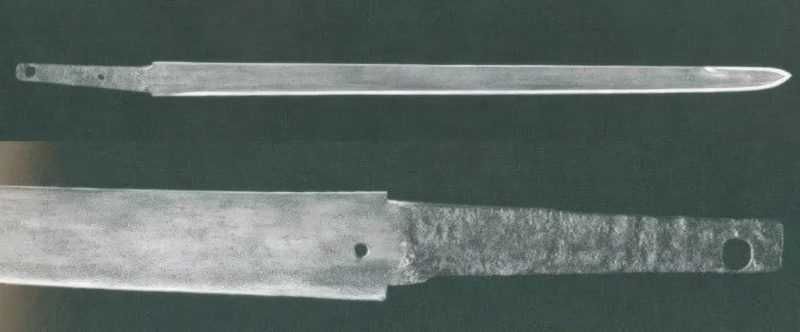
The Tang Dynasty of China, which lasted from 618 to 920 AD, oversaw a massive, cosmopolitan empire while the Viking Age was wreaking havoc and plunder across Europe. This was a time of great intellectual, economic, and cultural progress, and it was also the height of swordmaking with the Tang Dao Sword, or Tang Dynasty Dao.
This blade was modeled and given to the Tang military as a standard issue sword for all troops. In appearance, it resembled an earlier Jian, and it could be just as lethal. It was also relatively easier to manufacture, making it more popular. But it was still made of high-quality military equipment that would set you back the equivalent of a month’s pay for a soldier.
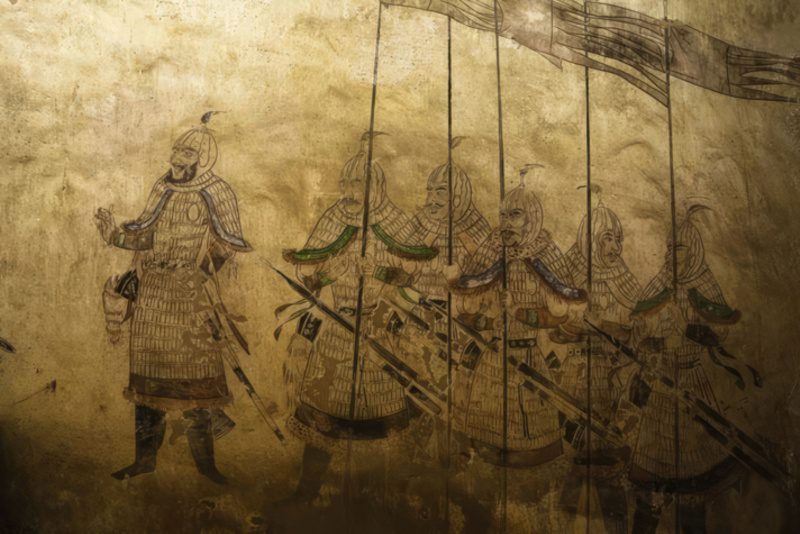
In the Tang Dynasty, there came to be a rule that forbids the use of funeral goods. This is unfortunate for modern sword enthusiasts, making it much harder to find such artifacts from the past, especially the Tang Dao.
As a result of the Golden Trade Period in China’s Tang Dynasty, the popularity of the sword and weapon expanded throughout East Asia, most notably to modern-day Korea and Japan, where it influenced the design of the renowned Samurai Sword. The flat-back single-edged swords that started with the Tang Dao had spread west to neighboring Tibet and the far Khazar Khaganate.
With time, however, and especially with the fall of the Tang Dynasty, the Tang Sword would eventually be replaced by the broader and more curved Dao swords, essentially for use on horseback. The Tang Dao would still live on through swords like the Chinese Zhibei Dao, Tibetan Pa Tam, or Dpa`dam.
